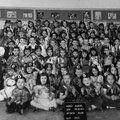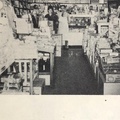Art Ishii began his judo training in 1954 at Hollywood Judo Dojo in Los Angeles, CA, under the direction of senseis Takashi Kikuchi, Frank Emi, Art Emi, Frank Watanuki, and Gene LeBell. Upon his induction into the Air Force in 1962, he was sent to Sheppard AFB in Texas.
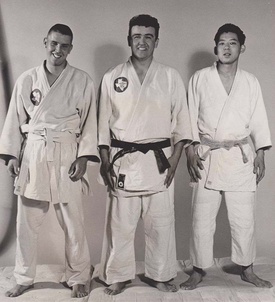
Art Ishii (right) with Sheppard Air Force Base Judo Club teammates, early 1960s. Photo courtesy of Art Ishii
“As an anonymous brown belt out of Hollywood Dojo,” he explains, “I was beating sandans (3rd degree black belts) in Air Force tournaments. I couldn’t believe it. It was a testament to the quality of training I’d taken for granted.”
He continued to train at Hollywood Dojo whenever back in Los Angeles on leave, and despite medaling in Air Force tournaments, remained nothing more than an “anonymous brown belt” in his home dojo.
“I never told my senseis of my tournament success in the military,” he reflects. “They would have laughed at me. It’s not that I was that good; the level of training was different. The first time I scored an Ippon (a match-winning full point) against a black belt in a military tournament I thought it was a mistake. But then it happened again. And again. I couldn’t understand it. Though as soon as I got back to Hollywood Dojo, that ride was over. I was a ‘C’ student at best in our dojo, absolutely nothing special, and to this day unremembered. After a while, into my mid-twenties, my body couldn’t take the abuse anymore, so I decided to investigate stand-up arts.”
His first foray into stand-up arts was while still in the military. A fellow airman needed a sparring partner for boxing, and Art made a deal with him that “for every round he beat on me in the ring, we’d spend an equal round on the judo mat. I was no match for him in boxing, but he was no match for me in grappling, so it really became a nice mutual exchange of training where we honestly developed a healthy respect for each other.”
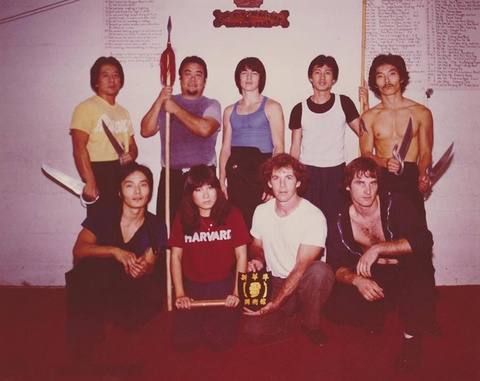
Art Ishii (second row, left) with the New Chinatown Gung-Fu Club, under the direction of Randy Williams Sifu (second row, center), early 1980s. Photo courtesy of Pete Farino
After the military, Art trained in Wing Chun for a number of years at the New Chinatown Gung-Fu Club under Randy Williams Sifu, an LA Chinatown native who today, having apprenticed under such notables as George Yau Sifu, Augustine Fong Sifu, and Ho Kam Ming Sifu, leads the Close Range Combat Academy, an international Wing Chun Gung-Fu organization. These many years later, the two remain close friends and exchange training at Art’s dojo whenever Randy’s travels bring him back to Los Angeles.
Art next trained in Goju-ryu Karate at Tenri Dojo in Boyle Heights, on Los Angeles’ Eastside, with the late Guy Kurose Sensei. Guy, a Sansei (third generation Japanese American) like Art, grew up in Seattle but had attended college at Tenri University in Nara, Japan. While there, Guy joined the karate club under Kenzo Uchiage Sensei from whom he earned his black belt and, unprecedented as an American in Japan at the time, not only became a collegiate kumite (sparring competition) champion, but captained the karate team his senior year.
Four years at Tenri Dojo introduced Art to, as he puts it, “ten push-ups and two hours of world-class sparring, three times a week. Shuji Koshimizu (another Japan collegiate kumite champion) was there for a while,” he continues, “and Guy’s brother Rollie would visit, too. Man, watching Guy and Rollie spar was like admiring a moving work of art—beautiful, beautiful technique and spirit. In four years, though, I didn’t learn a single kata (the formal, choreographed exercises of karate).”

Guy Kurose Sensei (left) with Art Ishii in Los Angeles' Little Tokyo, mid-1980s. Photo courtesy of Art Ishii
Upon Guy’s return to Seattle, Art was referred to Eihachi Ota Sensei’s Shorin-ryu karate dojo near the intersection of Olympic and Crenshaw Boulevards. A native of Okinawa, Ota immigrated to the United States in 1969 to help a friend run an already established karate dojo, despite his having recently graduated from an electronics college in Tokyo. Passionate for the art since childhood, and having trained for many years under Masao Shima Sensei of Naha City, Okinawa—whose dojo was also well-noted for its kumite—Ota eventually established his own dojo in Los Angeles 1973.
In the early 1990s, after ten years at Ota’s dojo and with a cumulative forty years of martial arts experience under his belt, Art accepted an invitation by Centenary United Methodist Church, a long-standing Japanese American congregation in LA’s Little Tokyo, to begin a karate program out of their social hall. Never having considered himself an instructor, he relates, “The first time someone called me ‘Sensei,’ I looked around the room going, ‘Where? Did Frank Emi just walk in? Guy? Oh man, they’re talking to me!’”
Twenty years later, Art Ishii continues to run Matsubayashi Shorin-ryu Dojo of Little Tokyo as a community-based entity at Centenary UMC. “Becoming head instructor of my own program was never my intention,” he says, “but life is unpredictable. Honestly, I’m glad it happened. It’s helped me to grow as a person these past twenty years, share some measure of our unique Japanese American culture, and serve the Little Tokyo community in some capacity, no matter how small.”
Although he teaches traditional Okinawan karate, Art remains true to his varied experience and frequently hosts highly regarded guest instructors of various styles to teach segments of his class. “Regardless of system or style,” he says, “good karate is good karate. And even more than that, good martial arts concepts transcend system or style so for instance, Randy can come in here and teach us something about our karate through his research into Wing Chun because although on the surface the two arts may look different, we all stick to some very fundamental concepts of training.”
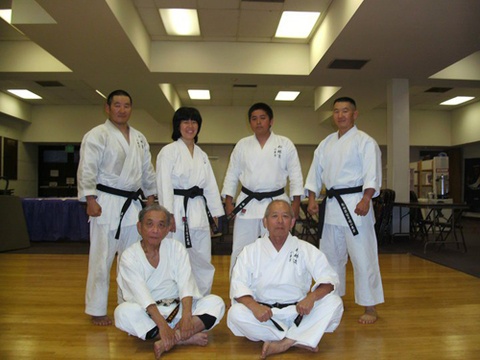
Guest instructor Rei Fujikawa Sensei (seated, left) of Shotokan karate, a former team member of Hidetaka Nishiyama's legendary 1970s kumite team, assists Art Ishii (seated, right) in running a black belt workshop at Art's dojo in 2012. Standing, from left to right, are dojo members Randal Kumagai, Cynthia Nishinaka, Walter Nishinaka, and Russell Kumagai. Photo courtesy of Matsubayashi Shorin-ryu Dojo of Little Tokyo
2014 marks Art’s sixtieth year of martial art practice; even so, he never forgets where it all started:
“My senseis at Hollywood Dojo were remarkable gentlemen of extraordinary character. Their aim in training wasn’t simply to beat people up or choke anyone out, but to bring up a new generation of respectable citizens.”
“I was fortunate to get to know some of them on another level through community work in my adult life, and even then, long after having had my own lifetime of experiences from being in the military to getting married, building a family and a career, and then even much later running my own dojo, I could still never bring myself to call them by their first names. They will always be ‘Sensei’ to me.”
© 2014 Erik Matsunaga


